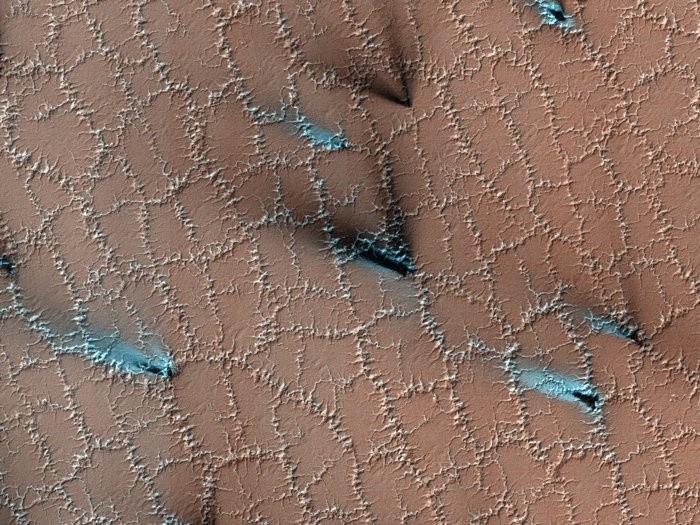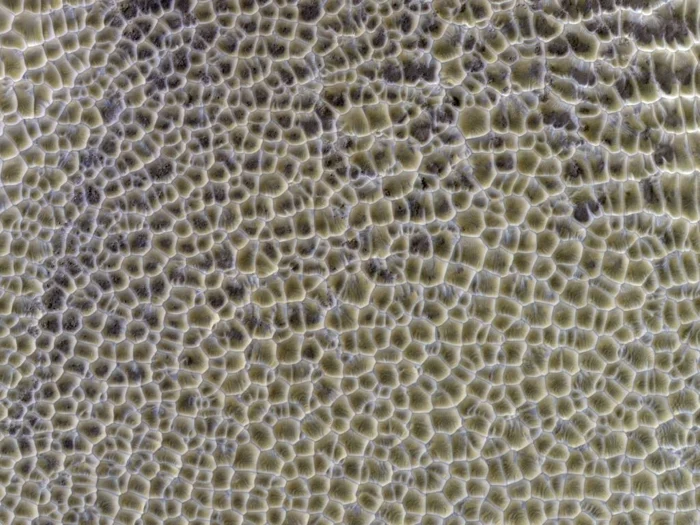Since SpaceX announced its plans for humanity to colonize Mars in the coming years, interest in this Red Planet has skyrocketed, and NASA's HiRISE camera's (High-Resolution Imaging Science Experiment) insanely crisp close-up of the planet could add up to the hype surrounding Mars.

Mars's Honeycomb Spider Web
The photo highlights the Martian landscape resembling a lacy honeycomb spider web when viewed from orbit.
As reported first by Science Alert, the weird polygonal shapes aren't made by spiders or bees on Mars. Rather, they are the result of a year-round process of seasonal change made of carbon dioxide and water ice.
The high-end definition camera is a product of the Mars Reconnaissance Orbiter, which was launched to Mars back in 2006 and has captured numerous images of polygonal shapes.
According to the HiRISE science team, the surface of Mars at high latitudes is significantly shaped by both water and carbon dioxide in the solid form of dry ice.
The ground is divided into polygonal forms by water ice that has been frozen in the soil. Subsequently, as the ground heats in the spring, dry ice just below the surface sublimates - causing even more erosion and forming channels around the polygonal edges.
Science Alert further noted that the polygons were built over several years when the near-surface ice compresses and expands periodically.
However, this polygon-shaped region indicates more springtime in action, as illustrated by its blue fan-like characteristics. Experts claim that the layer of clear dry ice covering the surface generates valves that enable gas to escape.
"The particles drop to the surface in dark fan-shaped deposits. Sometimes the dark particles sink into the dry ice, leaving bright marks where the fans were originally deposited," the HiRISE's team wrote on their website.
Since these characteristics provide information about temperature conditions and current and previous dispersion of ices in the subsurface, scientists emphasize investigating Mars' polygon pattern.
Polygons On Planets
However, it is worth noting that polygon patterns are not only visible on Mars. Science Alert said that our very own planet Earth has polygons on the polar and Antarctic regions.

Even the New Horizons spacecraft discovered polygons on Pluto after its flight to space last 2015.
A large, crater-free plain that appears to be no older than 100 million years and may still be being molded by geological processes could be located at the center-left of Pluto's enormous heart-shaped structure, which is known as the "Tombaugh Regio."
Sputnik Planum or also known as Sputnik Plain, was named after Earth's first artificial satellite, which is a frozen area north of Pluto's icy highlands. The surface looks to be segmented into polygonal sections, each of which is surrounded by steep troughs.
Related Article: NASA's Artemis-1 Mission Almost Completed Its Wet Dress Rehearsal, Is it Ready to Launch?
This article is owned by Tech Times
Written by Joaquin Victor Tacla
ⓒ 2025 TECHTIMES.com All rights reserved. Do not reproduce without permission.




